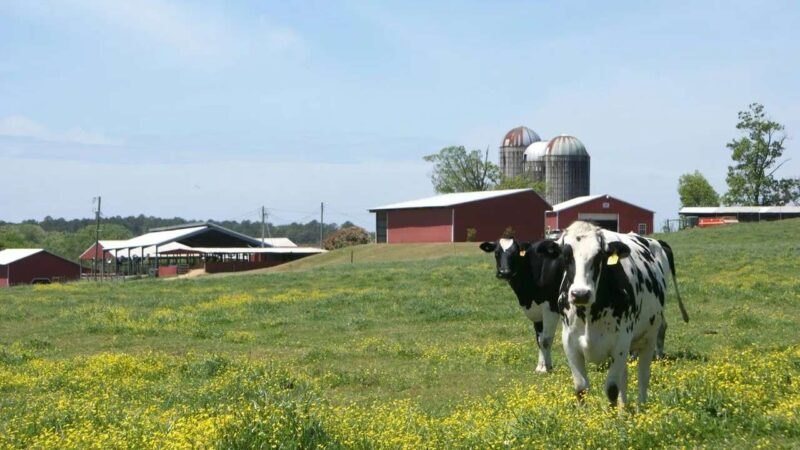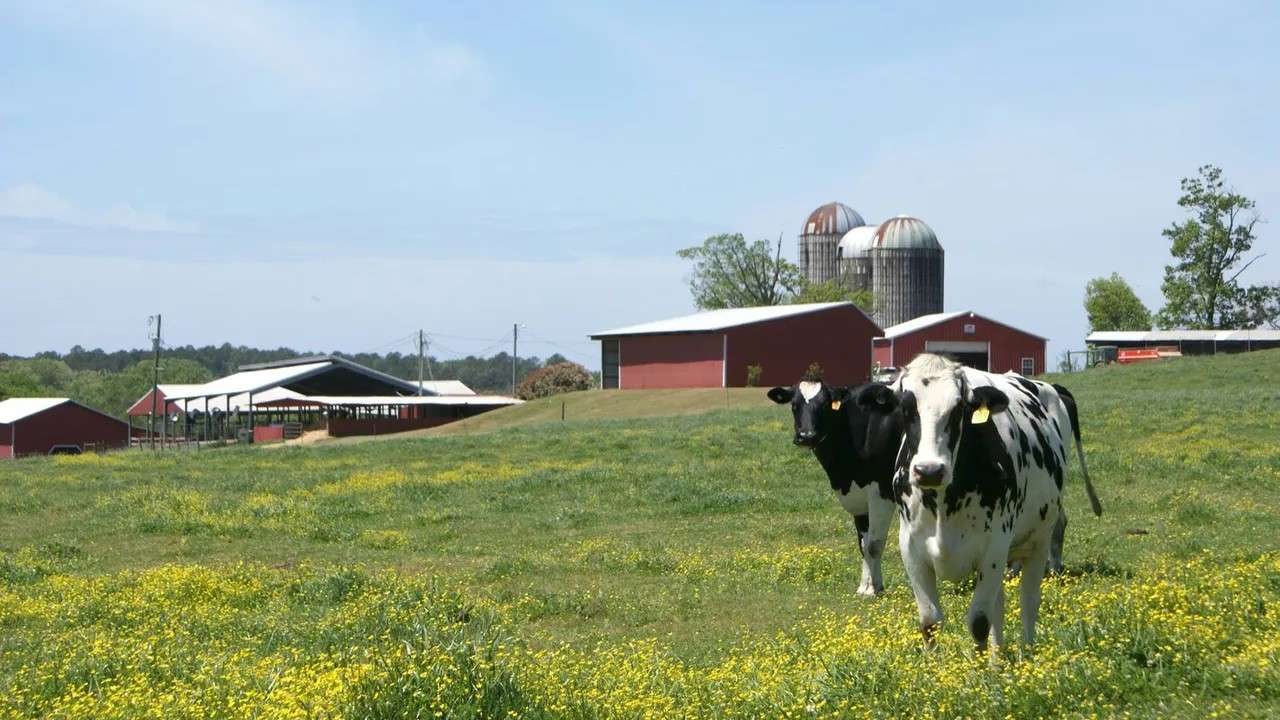Clemson Alum’s Robot Dairy Means No Human Hands
Revolutionary Approach Leads to National TV Appearance
EDGEFIELD, SC — A cow grazes contentedly on a mix of high-quality feed in the cool comfort of what may be the world’s most luxurious dairy barn. Done dining, she makes her way to the automated backscratcher for a post-meal rubdown. Then she ambles towards a gate that looks like a queue from any theme park, where she joins a line of other cows waiting to be milked.
They line up at the entrance to the queue, wait their turn, then one-by-one step onto a conveyor belt that leads to a milking stall that could have come straight from an old Jetsons cartoon. Robot arms buzz and whir, cleaning and prepping udders before finally attached a half-dozen milking cups. While Bessie enjoys a bite of dessert, the machinery does its business. Within minutes, the milking-on-demand is done and Bessie’s on her way back to the barn, without a human in sight – except the ones watching in wonder through a plate glass window.
Welcome to Hickory Hill Milk, the brainchild of the Dorn Family, multi-generational dairy farmers who are very well known in South Carolina. Their creamy milk and amazing ice cream are favorites wherever they’re available. And many others know the Dorns’ work from the world-famous blue cheese Clemson University makes with it. It’s the kind of story that gets attention and is the subject of this episode of Where The Food Comes From.
Watson Dorn comes from a long line of dairymen and he started out on a more conventional route, selling his milk to the big co-ops that supply the vast majority of our nation’s dairy needs.
But somewhere along the way, he started having second thoughts. He felt he could do better. He remembered milk that was… well, just better than the standard grocery store issue.
He made the commitment to withdraw from the co-op and start producing a premium product on his own. First emphasis was put on stock – the cows themselves had to be star players. Dorn invested heavily in their care and comfort.
But he also made the crucial decision to avoid the homogenization process. In the conventional supply chain, milk is put through a centrifuge and spun to thoroughly blend – homogenize – its individual components: cream, milk and butterfat. It’s not a health issue, it’s a matter of convenience. Unless milk is homogenized, you have to shake it up to remix it.
Watson Dorn gambled that people wouldn’t mind shaking his milk. The taste difference is instantly notable, with a rich creaminess that’s missing from the grocery store version. It’s so good his alma mater, Clemson University, tapped it as the source of the blue cheese it makes that’s won awards around the world.
And in the next episode, Where The Food Comes From will follow that milk from Hickory Hill to make that famous blue cheese with Clemson students and staff!
Hickory Hill is a true family farm. Watson’s wife Lisa, another Clemson grad, handles the finances and does general farm-wife duty, which is to say whatever needs doing at any given time. Son Daniel, also a Clemson product, manages the herd and is preparing to take over whenever Watson steps aside.
Daniel’s also the one who used to have to get up and milk the cows in the middle of the night, a job Watson did for years before that. Now nobody has to get up.
“It took us a couple of weeks to train the herd when we first installed the robotic system,” Daniel says. “Now the new ones learn from the others.”
Watson says that’s true of all kinds of critters – people included. His pride in watching his son work the farm is evident. The commitment to quality at Hickory Hill is contagious.
“It’s what you dream of, having family continue the work you’re doing, the work your family has done,” he says. “Doing things the way we did was tough, but we never looked back and we have no regrets whatsoever.”
Where The Food Comes From travels the country telling stories of food and farming, based on creator, host and producer Chip Carter’s many years in the media, including stops as a syndicated columnist with The Chicago Tribune and The Washington Post before he first appeared on-camera at The Huffington Post.
“They’re just the best people,” Carter says of the farmers he features on the show, now in Season 4. “And the Dorns are in a class of their own. So are the robots.”





